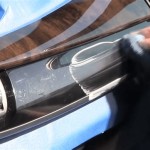Installing interior lights in a car is a great way to add a personal touch to your vehicle. Interior lights can provide ambient lighting for a variety of purposes, from reading to finding items in the dark. They can also be used to customize the look of your car, making it stand out from the crowd. Installing interior lights is not as difficult as it may appear, and with a few simple steps, you can be on your way to a new, illuminated look.
Choosing Interior Lights
The first step in installing interior lights in your car is deciding which type of lights you would like to install. There are a variety of options available, including LED lights, neon lights, and rope lights. Each type of light has its own advantages and disadvantages, so it is important to choose the type that best suits your needs and preferences.
LED lights are the most common type of interior light and are considered to be the most energy-efficient. They also last the longest, with some LED lights designed to last up to 50,000 hours. In addition, LED lights are available in a variety of colors, so you can customize the look of your car.
Neon lights are another popular option for interior lighting. They offer a unique, eye-catching look and are available in a variety of colors. However, they are not as energy efficient as LED lights, so they are not necessarily the best choice if energy efficiency is a priority.
Rope lights are another option for interior lighting. They are relatively inexpensive and can be easily installed in a variety of locations. They also offer a unique, decorative look that can add a touch of style to your car.
Installing the Lights
Once you have chosen the type of interior light you would like to install, the next step is to begin the installation process. Depending on the type of light you have chosen, the installation process may vary. However, in general, the following steps can be used for most types of interior lighting:
- Mark the location for the lights and drill the necessary holes.
- Run the wiring from the power source to the location of the light.
- Connect the wiring to the light.
- Secure the light in place.
- Test the light to make sure it is working properly.
If you are unsure of how to complete any of the steps, it is important to consult an experienced auto electrician or mechanic before proceeding. They can provide the necessary guidance and advice to ensure that the installation is done correctly.
Conclusion
Installing interior lights in your car is a great way to add a personal touch to your vehicle. With a few simple steps, you can have a new, illuminated look in no time. Be sure to choose the type of light that best suits your needs and preferences, and consult an experienced auto electrician or mechanic if you are unsure of how to complete the installation process.










Related Posts










